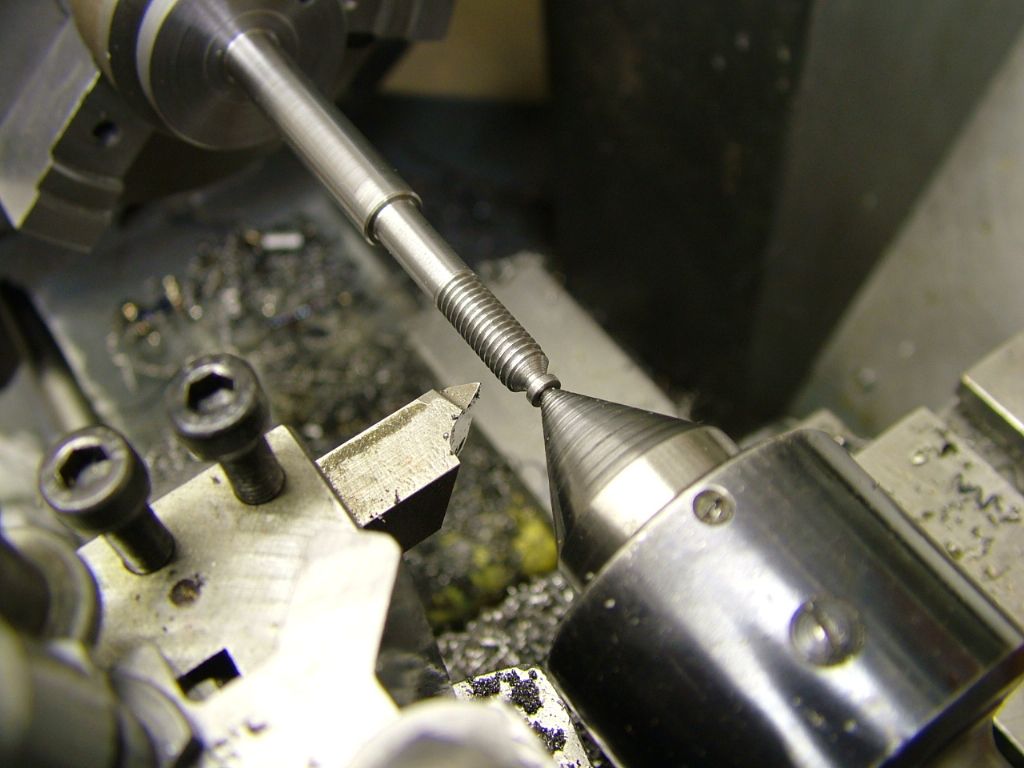As has been said, in normal lathe use the primary advantage of setting the topslide at an angle is to generate clearance between the top and cross slide handles or topslide and tailstock depending on whether its at 90° to the bed or parallel to it. Small amchines tend to be cramped.
A secondary advantage is that it reduces the possibility of error should the topslide not be exactly at 90° or parallel if using it to apply a cut. Getting it dead right and ensuring its always dead right can be a pain. Especially on smaller machines with only the basic equipment that home shop guy/gal budget can stretch to.
Odds are that any such cut will be done mid job with no chance to verify settings. Often the last cut that has to be spot on to make the job just right too!
Setting at 90° to the bed always seems a bad idea to me because tool in feed cutting forces need to be applied via both cross slide and topslide screws. Which generally are fairly slender and not exceptionally stiff on our (usually) smaller lathes. Unless the topslide is locked solid. But most lathes don't have provision for that without disturbing gib adjustments.
With two screws in the way you have two lots of backlash clearance floating around so if the cut goes into "judder in and out" mode it can be twice as bad. No nice when parting off decides to go wrong.
When screwcutting the big advantage of setting the topslide at an angle is that you can use the Zero-2-Zero method which is by far the easiest to set-up and implement. Forget the American insistence on setting at exactly 30° which requires maths to calculate feed and, along with the lantern tool post, provides further proof that our colonial cousins are not quite bright when it comes to lathes. The Zero-to-Zero method lets you set the topslide at any sensible angle, mine lives at 25° which does Whitworth, American and Metric just fine, because the lathe actually does the infeed calculations for you.
When using Zero-2-Zero you initially touch the tool tip to the job and set both top and cross slide dials to zero then move the tool clear of the end of the job and feed the cross slide forward by the depth of the thread you wish to cut. Straight out of the book usually. Re-set the cross slide dial to zero and pull back the topslide to gain clearance. Make the cuts with the cross slide set to zero and apply feed with the topslide. When both dials are at zero and all spring cuts are worked out you have cut what you set.
Which probably doesn't actually fit as, in the home shop, the minor diameter tends to come out too large.
Generally our home ground tools aren't exactly the correct tip shape and when using factory carbide or chaser tooling we don't have the correct infeed data to generate a thread right first time. Understanding the clearances involved and their interaction with tip shapes from the usual "lots of triangles" picture in the Zeus or other reference book is hard. Easy enough to add a bit of extra feed to the cross slide, shaving things down until they do fit. If the cross slide zero is altered to refect this any subsequent threads will fit perfectly.
Organised folk will make a note of the extra feed needed for chasers et al. I've had my Johannesson / SKF chasers for 20 years and not got round to it.
Biggest disadvantage of Zero-2-Zero is that it needs a slightly larger run out groove at the end of the thread. 1 1/2 pitches minimum rather than 1. But who is that accurate at dropping the halfnut.
Hardcore manual machinists consider single tooth clutches and Ainjest attachments cheating.
Clive
Anonymous.






